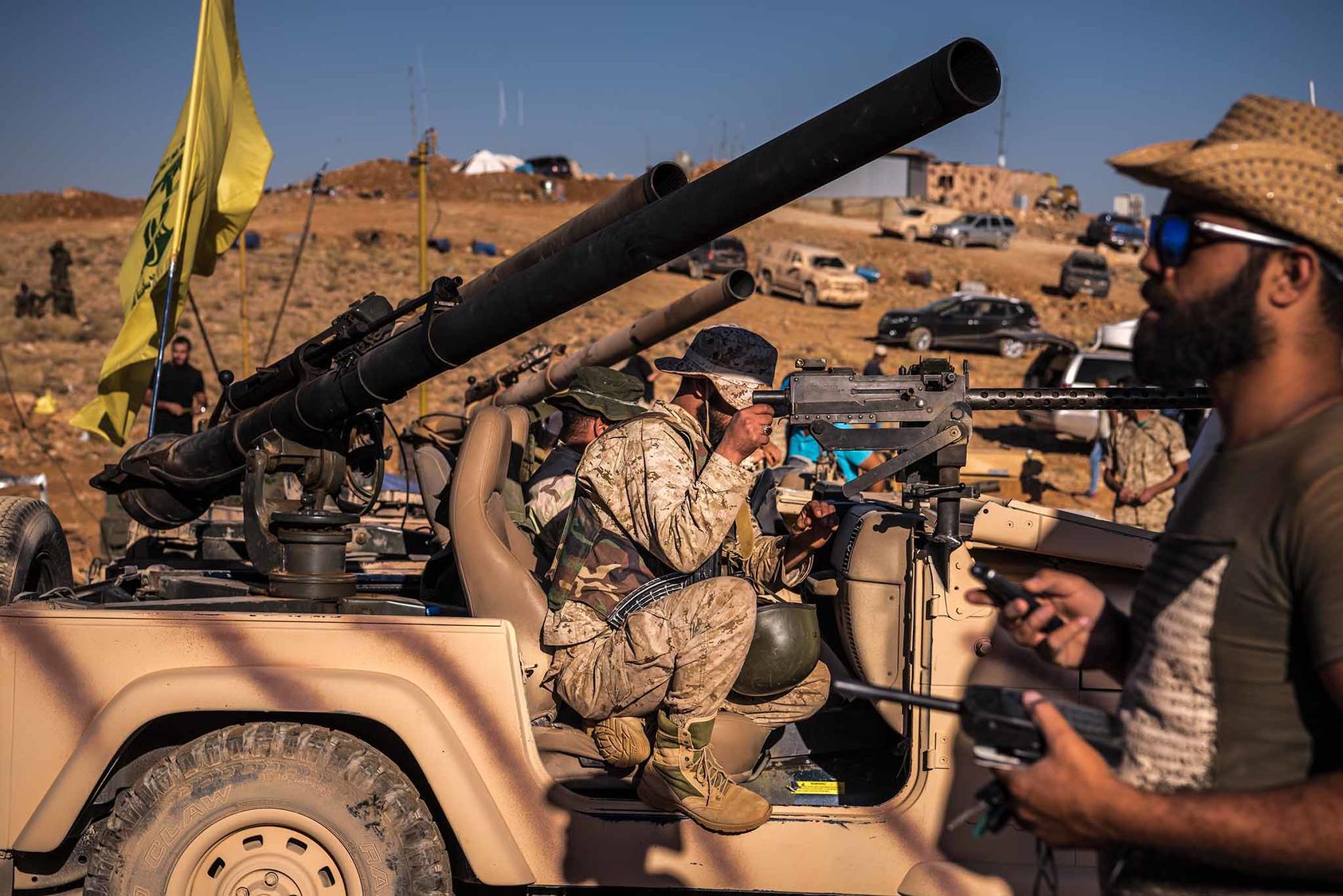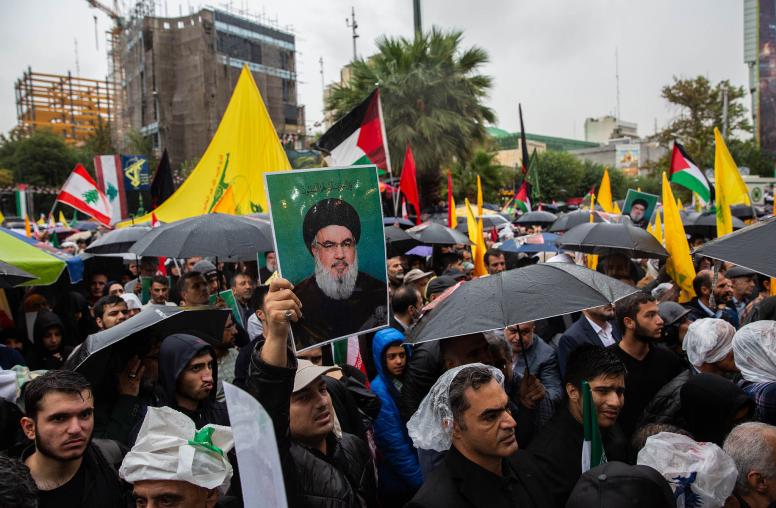Iran and Israel Are Racing Toward Confrontation in Syria
Will it lead to a wider regional conflict?
Israel has long been wary of Iran’s power projection in the Levant, particularly in Syria. Ties between Tehran and Damascus have been close since the 1979 revolution, but the relationship deepened after Syria’s civil war erupted in 2011. With the Assad regime’s survival at stake, Tehran doubled down on its support, providing critical military assistance—fighters and strategists—and economic aid estimated to be in the hundreds of millions of dollars. Syria and Iran now have a partnership with existential stakes—for the Assad regime’s longevity and Iran’s enduring position in Syria, the most strategic property in the Levant. USIP’s Mona Yacoubian looks at Iran and Israel's goals and concerns in Syria and the potential of their shadow war spilling over into a regional conflagration.

Since 2013, Israel has launched more than 100 airstrikes against Iran’s forces and its allies in Syria. What’s happening?
The Islamic Republic’s military entrenchment in Syria significantly heightened Israel’s concerns, leading Israel to declare a red line on the transfer of sophisticated Iranian arms to Hezbollah. In January 2013, Israel launched its first airstrike on Iranian interests in Syria. The reported target was advanced anti-aircraft weaponry intended for Hezbollah. Over the next five years, Israel flew repeated missions to disrupt Iranian weapons transfers to the Lebanese militia, which has also played a large role in propping up Assad.
Hostilities escalated dramatically in February 2018 when Iran flew a drone—reportedly armed—from Syria into Israel. “This is a serious Iranian attack on Israeli territory,” said Israeli spokesman Brigadier General Ronen Manelis. “Iran is dragging the region into an adventure in which it doesn’t know how it will end.” Israel responded with an airstrike on the Tiyas military airbase, also known as T-4, where the drone had originated. Syria responded with anti-aircraft missiles, which hit an Israeli F-16 warplane that crashed as it returned to Israel—its first loss of a military aircraft in conflict since 2006.
Tensions continued to intensify after a second Israeli attack on the T-4 base near Homs; seven Iranian military advisors were killed. After additional Israeli attacks on Iranian targets in April and May, Iranian forces in Syria launched 20 Grad and Fajr rockets into the Israeli Golan Heights. Israeli jets retaliated on May 10 by hitting some 70 Iranian targets in Syria—Israel’s largest attack on Syria since the 1973 Arab-Israeli war. The shadow war between Israel and Iran is threatening to become a hot war with the potential to spill over into the region.
What are Israel’s goals and concerns in Syria?
Israel’s primary goal is to check Iran’s military presence—both its forces and its long-term access to bases. With Iran deployed in dozens of Syrian military facilities by mid-2018, Israel’s strategy is to establish new red lines that will impede the Islamic Republic’s ability to threaten Israel from Syria. Israel has also vowed to prevent Iran’s construction of facilities that could produce precision-guided missiles in Syria.
Israel generally wants to block Iran from transforming Syria into another Lebanon, which would add a threat on Israel’s eastern border and compound the longstanding tensions with Hezbollah on its northern frontier. "We will not let Iran turn Syria into a forward base against Israel,” Israeli Defense Minister Avigdor Lieberman warned in May 2018. “This is the policy, a very, very clear policy.”
Israeli Prime Minister Benjamin Netanyahu said Iran had “crossed a red line” when its forces fired 20 rockets into Israel on May 10. “Whoever hurts us—we will hurt them sevenfold, and whoever is preparing to hurt us—we will act to hit them first,” he said. “This is what we have done, and this is what we will continue to do."
What are Iran’s goals and concerns in Syria?
Iran’s primary objective is to increase influence in the Levant. In Syria, it wants to deepen its military and economic presence. Exploiting Syria’s chaotic civil war, it has sought to establish a strategic land corridor connecting Tehran to the Mediterranean. In Lebanon, it seeks to protect Hezbollah, a Shia ally and local proxy. And to deter and counter Israel, it wants to establish a forward presence on the ground.
Iran is also interested in shaping post-war Syria. By bolstering the Assad regime, it prevented—for now—the emergence of an unfriendly government dominated by Sunnis in Damascus. It has also contributed to the Syrian regime’s “demographic re-engineering,” which has prevented the return of Sunnis to their homes through population swaps that relocate Shia to formerly Sunni-dominant areas. It is now positioning itself to play a leading role in reconstruction, especially on telecommunications, hydrocarbons, power and other infrastructure.
Why is Israel striking Hezbollah and Iran in Syria and not Lebanon?
In an odd reversal from the past, Syria has become the favored battleground for Israel to confront Hezbollah and, by extension, Iran. For decades before the Syrian civil war, Lebanon had been the proxy battlefield for regional powers—including Israel, the Gulf states and Iran—to challenge each other. At the time, the border between Israel and Syria was the quietest; the status quo was anchored by arsenals that ensured mutual deterrence. The chaos unleashed by Syria’s civil war changed that dynamic.
As Syria’s civil war evolved into a multilayered, regional (even global) proxy war, Israeli warplanes began occasional airstrikes on Hezbollah and Iranian targets, albeit usually flying from Lebanese airspace. It refrained from attacking Hezbollah targets inside Lebanon, however. Israel could more easily target Hezbollah under the guise of the Syrian conflict, allowing both sides a degree of deniability.
How deep is Iran’s presence in Syria?
Iran’s military presence in Syria is unprecedented. Estimates have ranged from several hundred to a few thousand troops. Both the Islamic Revolutionary Guard Corps’ (IRGC) elite Qods Force and Iran’s conventional Artesh military have been dispatched to frontlines in the north, south, east and around Damascus. The Qods Force commander, General Qassem Soleimani, has been photographed frequently near the frontlines. Iranian advisors reportedly played a pivotal role in the battle for northern Aleppo in 2016.
Tehran has also mobilized up to 20,000 fighters from Afghanistan, Iraq, Lebanon, Pakistan, and elsewhere to bolster the Assad regime. Hezbollah has provided several thousand of those fighters. As of April 2018, Iranian forces and their proxies were deployed in nearly 40 facilities, not including forward positions. Many of those sites may have been damaged or destroyed in Israeli airstrikes since then, however.
What price has Iran been willing to pay in Syria?
Iran’s enhanced engagement in Syria has come at a high price. By April 2018, Iran had reportedly lost nearly 550 personnel, including more than 10 with ranks equivalent to brigadier general. Iranian forces in Syria may have taken their biggest hit on May 10. Among some 70 Iranian targets, Israel reportedly hit intelligence, logistics and storage facilities as well as military vehicles. Defense Minister Lieberman said the strikes targeted “almost all of the Iranian infrastructure in Syria.”
Iran’s allies also have suffered serious losses. Between January 2012 and April 2018, at least 2,300 Afghan, Iraqi, Lebanese and Pakistani fighters died, according to Iran analyst Ali Alfoneh. By 2016, at least 2,000 Hezbollah fighters had been killed and another 10,000 injured.
What are the future dangers?
The most significant danger is that hostilities between Israel and Iran escalate further and the conflict spreads from Syria into Lebanon—or even beyond—to become a more complex regional conflagration. Neither country may be interested in all-out war. Yet the prospect of miscalculation is growing as both sides continue to probe and test each other. Since February, hostilities have intensified with each provocation and response; the two adversaries have moved from indirect conflict to direct confrontation.
The Syrian civil war—now in a protracted endgame, with the Assad regime set to prevail—has upended the regional order. Assad’s survival has emboldened Iran and its allies. It has guaranteed unprecedented leverage inside Syria that poses an intolerable threat to Israel. Russia has intervened episodically to de-escalate tensions. President Vladimir Putin hosted Israeli Prime Minister Netanyahu on May 9, then President Assad traveled to Sochi on May 17. But there have been no significant regional or international mechanisms to defuse tensions. By May 2018, Israel and Iran appear to be on an inexorable collision course in Syria—with no apparent off-ramp—that threatens yet another open-ended conflict in the Middle East.
This article originally appeared in the Iran Primer.



